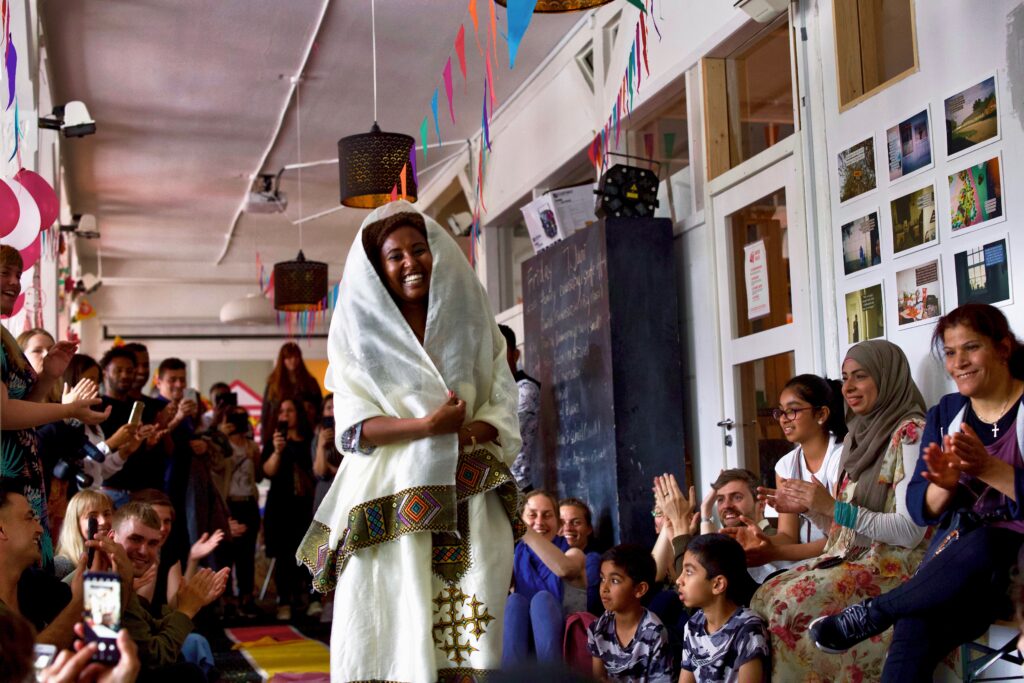
The idea of the artist isolated in his studio has long sounded like an old-fashioned image to describe the production field of contemporary practices, but finally documenta, considered the most important exhibition of current art, focuses on collectives of activist character as one of its main axes.
After a bold edition in 2017 that divided the exhibition part into two cities, Athens (Greece) and Kassel (Germany), under the direction of Polish Adam Szymczyk, the show now has ahead precisely a collective of artists, ruangrupa, based in Jakarta, Indonesia. In 2014, the group participated in the 31st Bienal de São Paulo, How to talk about things that do not exist.
Part of the collective was last March in São Paulo, at the Casa do Povo, where held about 10 meetings with 40 people and groups, from Jamac (Jardim Miriam Arte Club) to Councilwoman Erica Malunguinho, passing through Movimento Sem Terra and indigenous leader Jerá Guarani. From the list, there is no doubt that the documenta will have a strong activist character.

“We want to create a globally oriented, collaborative and interdisciplinary art and culture platform that will remain effective beyond the 100 days of documenta fifteen. Our curatorial approach seeks a different kind of collaborative model of use of resources – in economic terms, but also with regard to ideas, knowledge, programs and innovations,” announces ruangrupa on the documenta’s website.
There, by the way, are already listed 14 invited collectives to this edition, originating from 13 different countries: Germany, Kenya, Denmark, Palestine, England, Hungary, Colombia, Cuba, Indonesia, Spain, Mali, New Zealand and Bangladesh. Among them is inland, a collaborative agency started in 2009 by the Spanish Fernando García-Dory, which provides a platform for various actors involved in agricultural, social and cultural production. In 2018, Dory participated in the start of the creation of a garden on the terrace of the Casa do Povo.

The themes of these collectives are broad and diverse, such as Project Art Works, a collective of artists and creators based in Hastings, UK. They produce and disseminate art supported by radical approaches to neurodiversity, rights and representation, and are one of five collectives nominated for the prestigious Turner Prize, now in 2021. That’s right, for the first time there are five collectives nominated for the award organized by Tate, which in 2015 had already awarded a collective, the British Assemble.
According to Alex Farquharson, director of Tate Britain and chairman of the selection committee, in an interview with The Guardian, “the jury selected five notable collectives whose work not only continued during the pandemic but became even more relevant as a result.” It’s certainly stimulating the harmony between Tate’s and documenta fifteen’s decisions.
Another coincidence between the two art institutions is the Cuban Tania Bruguera, who in 2019 was responsible for occupying the Turbine Hall of Tate Modern, and who will participate in documenta fifteen with her collective instar, based in Havana (Cuba). The Instituto de Artivismo Hannah Arendt (INSTAR) emerged as a civic literacy institution in 2015 from an artistic intervention organized by Bruguera, where people read and discussed Hannah Arendt’s book, The Origins of Totalitarianism, for 100 hours.
Since its inception, instar is thought of as a democratic and horizontal space, where decisions are taken by consensus. “We are interested in claiming social justice and rights sometimes foreign to the Cuban context, such as fair wages, a work environment that is favorable to motherhood, supporting independent projects and artists, respect for freedom of expression and building a project with people who think differently, but want to make a country for everyone,” the collective says of its work , on the website of documenta fifteen.
Collective rice barn
One of the concepts that ruangrupa is launching to account for these collective practices is lumbung, an Indonesian term for community rice barn. It will be used as a guiding principle of the show’s core values and ideas.
Nothing more appropriate, after all the adversity crossed by the planet during the pandemic, that art rescues community values and respect for nature. It is thus, at least, that one perceives the idea of lumbung, “as an artistic and economic model rooted in principles such as collectivity, communal sharing of resources and equal distribution, which is incorporated in all parts of collaboration and exhibition”, according to the description of the show’s website.

The proposal of sharing and collaboration materializes, during the creating process of the show, in Kassel, in a space called ruruhaus, a few meters from the Fridericianum, the museum that was the first place of the documenta, in 1955, and has been occupied by it for every five years. Ruangrupa has now announced a digital and interactive ruruhaus experience, which can be accessed here. In June it was possible to answer the question: “What kind of living room does a city need?”.
In times of social distancing, the question even sounds utopian, but, after all, it is a good thing that art continues to believe in new worlds and, as seems to be the objective of this documenta, pointing out who is leading this movement with solidarity practices.
Leia em português, clique aqui.











